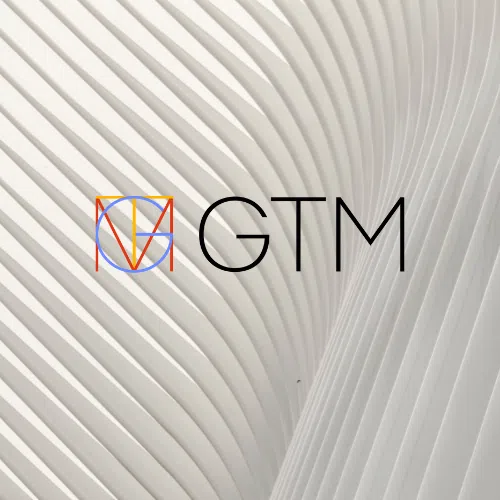By Brian Abbey, Managing Director, International Tax Services
30-Second Summary:
- A global recession will help mitigate certain existing issues with GILTI while creating new ones. Proactive planning can help.
- Faced with the possibility of net tested loss positions in 2019, U.S. companies should be evaluating their options to reduce those losses while maintaining the net tested loss position overall.
- Taxpayers must consider the possibility of having CFC QBAI and possibly foreign taxes stranded for those CFCs with tested losses.
- Transfer pricing can be used to move income to address tested losses at CFCs in general, or to free up QBAI and foreign taxes.
As economies around the world slow down, U.S. taxpayers may find themselves confronting Global Intangible Low-Taxed Income (GILTI) problems of a different nature. Proactive planning now can help position taxpayers to use a favorable attribute in 2020, while possibly reducing the blow of GILTI in future years. In this blog post, I will answer some questions and provide some examples of ways to address tested losses at Controlled Foreign Corporations (CFCs). While not an exhaustive list, it should help get you started.
What Are Some Impacts of an Economic Downturn to GILTI in General?
Since GILTI’s enactment, U.S. taxpayers, for the most part, have had to contend with the unintentional Section 861 cost associated with GILTI, which occurs when the overall effective tax rate at CFCs increases more than 13.125%. A global recession will help mitigate this issue to be sure, but it may also create a new issue for several reasons. For example:
- If a U.S. shareholder has a net tested loss at its CFCs –meaning that, in aggregate, the tested losses at its CFCs exceeds tested income – there is no GILTI inclusion. In practice, however, this result means that an aggregate tested loss of $10 has the same value as an aggregate tested loss of $10 million.
- A CFC’s tested loss this year does not become next year’s net operating loss deduction. There is no benefit from additional losses at a U.S. shareholder’s CFCs after the overall aggregate position is ($1). In the tested loss/GILTI universe, losses cease to be attributes when the overall position gets negative. Even more problematic is that for foreign tax purposes, potential NOL carryforwards may exist, leaving CFCs with future tested income and low foreign tax.
What are Some Tested Loss Considerations?
Faced with the possibility of net tested loss positions in 2019, U.S. companies should be evaluating their options to reduce those losses while maintaining the net tested loss position overall. Clearly, if top line revenue decreases significantly, there are limited choices available. Making these choices can still provide benefits, however, by reducing the U.S. shareholder’s net tested loss while at the same time reducing future income or increasing future deductions for years when the world is on better economic footing.
Because tested income (or loss) is determined using primarily U.S. tax concepts, U.S. taxpayers should review trial balances at their CFCs to see what accounting methods are available to either defer expenses or accelerate income recognition. While this exercise is helpful in trying to preserve GILTI-related attributes, it is also just tested income hygiene to make sure tested income is accurate.
While there are limited options to accelerate income, options do exist. For example:
- Make sure your CFCs are recognizing income under Section 451(b). Section 451(b) was added as part of the Tax Cuts and Jobs Act (TCJA) and provides that for any accrual method taxpayer the all events test is not met later than when income is recognized for financial statement purposes. Taxpayers can also evaluate how they are treating the income recognition of advanced payments under Section 451(c). Any change under Section 451(b) or 451(c) requires an accounting method change.
On the expense side, taxpayers have more options available. For example:
- Make accounting method changes related to expenses that are capitalized under Section 263A. Typically, Section 263A is broader than financial statement capitalization requirements, specifically in the area of indirect or overhead costs. Research and development costs are sometimes mixed service costs that can be capitalized under Section 263A. It is also possible to defer accrued bonuses, vacation, severance and other expenses to the extent that they are not fixed and determinable at year-end, or not paid within 2.5 months after year-end. Alternatively, consider stopping the use of the recurring item exception for expenses such as insurance and refunds.
- Properly treat pension expenses under Section 404A. This area is often overlooked. Section 404A is a complicated provision that allows deductions for expenses associated with the maintenance of foreign defined benefit plans. Failure to make an election under Section 404A can significantly limit the ability to deduct any pension contributions. As mentioned, a method change related to Section 404A can often decrease a CFC’s income, which in the current environment may not be favorable. It is worth a look though, if as part of an overall health check if nothing else.
- Use Section 59(e) elections to decrease expenses. This is not an accounting method change, but as anyone with U.S. losses or other expiring U.S. attributes knows, a Section 59(e) election can often be an unsung hero in increasing taxable income. It provides for a great deal of flexibility in that the election can be made yearly and for specific dollar amounts. Section 174(b) provides similar treatment with a 5-year recovery period instead of 10.
One thing to keep in mind with respect to any accounting method change is that a favorable accounting method change is taken into account over one year while unfavorable method changes are taken into account over four years. In this context, that timing means that any increases to taxable income will come into account over four years, which will cut against the overall benefit in 2020. Other considerations include whether the accounting method change can be made under the automatic or non-automatic change procedures, or whether the prohibition for making a change to the same item within a five-year period applies.
What About Stranded QBAI and Foreign Taxes in this Environment?
Another item that taxpayers need to consider, whether the U.S. shareholder has a net tested loss position or not, is the possibility of having CFC QBAI and possibly foreign taxes stranded for those CFCs with tested losses. In that case, taxpayers should consider options to increase the tested income using one of the options mentioned above. Alternatively, companies should consider check the box elections to match tested income and losses in separate CFCs to free up QBAI and foreign taxes. It may be necessary to restructure entities to do this. However, assuming that the Section 368 requirements are satisfied, including business purpose, intercompany restructuring can be tax free.
Can Transfer Pricing Be an Option?
Transfer pricing can also be a valuable tool when trying to address income or loss positions. It can be used to move income to address tested losses at CFCs in general, or to free up QBAI and foreign taxes. Companies should look at where they are falling within their interquartile range, as sometimes transfer pricing takes on a “fix it and forget it” dynamic that warrants reconsidering as markets change. Given how much the global economy has changed just in the past few weeks, it may be necessary to reexamine entire transfer pricing policies, which is clearly a step further than just adjusting current prices from one quartile to the next. Regardless, despite the risk of controversy, revisiting transfer pricing ranges, if not entire policies, can be helpful to address some of the possible GILTI issues companies will face.
Conclusion
There are many options for companies to consider as they start digging into their 2020 GILTI calculations in Q1. To be sure, accounting method changes and check the box planning can only do so much when economic conditions deteriorate significantly. Regardless, it is prudent to see what options are available to plan around these changing conditions. It is also necessary to keep an eye on the interdependencies associated with changing tested income at CFCs. These include, among other things, Section 163(j) limitations and the amount of creditable foreign taxes, if any. Companies should begin evaluating alternatives to use net tested loss positions this year, either to access otherwise stranded CFC attributes, or to improve the US shareholder’s overall GILTI position in the future.
About GTM’s International Tax Services
Considering the rapid changes that are occurring today worldwide, U.S. and foreign multinationals face an array of international tax planning and compliance challenges. This dynamic environment requires international tax planning to be driven by a multinational’s business operations. Whether your company is just beginning to expand overseas or has mature international operations, GTM can help manage, support, or outsource your international tax planning and compliance needs. Our experienced ITS team possesses deep technical knowledge and extensive business acumen to navigate through the international tax compliance complexities and deliver practical, business driven international tax planning recommendations. Contact Brian Abbey, GTM’s Managing Director of International Tax Services to learn more.



